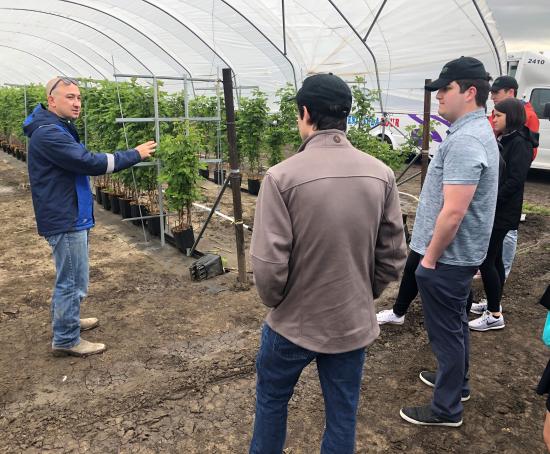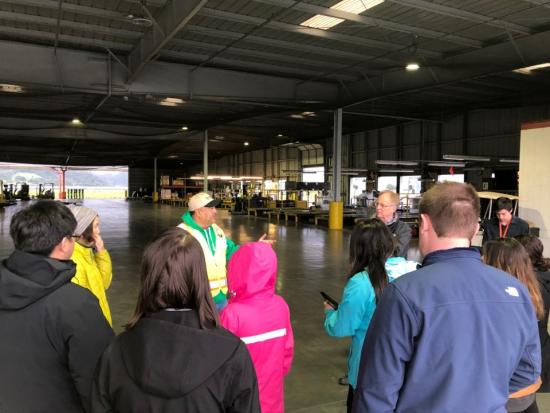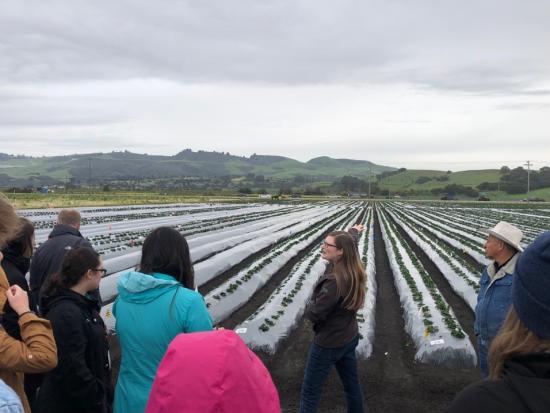A Berry Nice Trip to Driscoll’s

Our final adventure on March 22nd took place in Aromas and Watsonville at the largest berry producer in the United States, Driscoll’s. At Driscoll’s we had the pleasure to meet with Lisa Beatty and Sam Silva. They kicked off our tour by showing us around their largest distribution center and explaining how the operation works. Sam informed us that Driscoll’s began selling exclusively domestic strawberries, and since has expanded to growing and selling blackberries, blueberries, and raspberries internationally. Throughout the peak season, the Watsonville location ships approximately 210,000 crates of berries to customers like Wal-Mart, Kroger, Costco, and Amazon. This results in a high demand for labor, which will be difficult to meet with new overtime regulations that come into effect by 2022.

At the distribution plant, Sam took us to the receiving docks, and explained the process that berries go through to ensure freshness in stores across the United States. After berries are picked at the perfect ripeness, they are then chilled in a cooler to guarantee the highest quality.

After walking through the cooler, we visited TCR, a test plot of strawberries, where we met Amy Edmundson, from Research and Development. She and Augustine Renteria, a rancher with over thirty years of experience, went into depth about strawberry farming. He informed us that they utilize cover crops to supply nutrients to the soil and then prep the soil with tilling and bedding. Test plots are vital for breeding the best varieties of berries. They improve variety, flavor, yield, shelf life, and much more. All employees have the opportunity to taste test the berries to help determine whether consumers will approve.
We rounded off our tour at Butier Substrate, a part of their raspberry operation, where Jean Pierre explained how Driscoll’s utilizes their demo farms. The raspberry ranch we saw included crops from four commercial growers testing for the highest harvest efficiencies. They provide a plastic shelter to cover their plants and limit exposure from sunlight, wind, and rain. Since raspberries are delicate and easily crushed, this area of harvest has been difficult to mechanize. Driscoll’s also encourages sustainable farming (i.e. coconut husks for the raspberries’ potting substrate).
Visiting Driscoll’s large-scale berry operation was fascinating and incredibly different from the typical farm we would see in the Midwest. This business was an excellent opportunity to familiarize ourselves with berry production and get a chance to see where the berries in our local stores are actually grown.